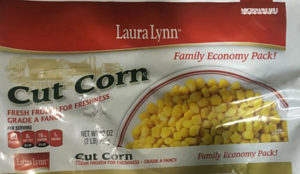One of my daughters got married on the weekend. I have two grandsons. The Tragically Hip may never play live again (it’s a Canadian thing, but 1-in-3 Canadians watched the concert Saturday night from Kingston).
 My other 30-year bookmark is my formal and informal interests in the interactions between science and society. In 1997, I co-wrote a book called Mad Cows and Mother’s Milk: The Perils of Poor Risk Communication.
My other 30-year bookmark is my formal and informal interests in the interactions between science and society. In 1997, I co-wrote a book called Mad Cows and Mother’s Milk: The Perils of Poor Risk Communication.
We had a top-10 list of conclusions to be applied in whatever risky business might come along:
- a risk information vacuum is a primary factor in the social amplification of risk;
- regulators are responsible for effective risk communication;
- industry is responsible for effective risk communication;
- if you are responsible for communicating about risks, do it early and often;
- there is always more to a risk issue than what science says;
- always put the science in a policy context;
- educating the public about science is no substitute for good risk communication practice;
- banish no risk messages;
- risk messages should address directly the contest of opinion in society; and,
- communicating well has spinoff benefits for good risk management.
I watch these microbial food safety risk shitfests, document them in barfblog.com, and sigh-a-sigh worthy of someone who didn’t just fall off the turnip truck.
Or maybe I did.
Who knows, at this point.
Following the Listeria-Blue-Bell-ice-cream debacle, some of Ohio-based Jeni’s Splendid Ice Creams tested positive for Listeria in April, 2015.
At the time, I applauded Jeni’s CEO John Lowe for the proactive steps they announced after finding Listeria in their ice cream, but also wondered why they weren’t looking before?
Lowe also said, “Finally, let me reiterate: we will not make or serve ice cream again until we can ensure it is 100% safe. Until we know more about reopening, we are going to continue to keep our heads down and to work hard to get this issue resolved. But know this: you’ll be hearing from us soon.”
Sounds like some cookie-cutter MBA approach to crisis.
And no one can ensure 100% safe.
 Jeni’s possibly found this out, on Aug. 9, 2016, when the U.S. Food and Drug Administration fired off a warning letter saying Listeria had again been found in Jan. and Feb. 2016 in their Columbus facility.
Jeni’s possibly found this out, on Aug. 9, 2016, when the U.S. Food and Drug Administration fired off a warning letter saying Listeria had again been found in Jan. and Feb. 2016 in their Columbus facility.
“Two of 75 samples were found to have listeria by the FDA’s lab. Those two samples came from:
* The floor adjacent to the prep room, nine feet from a prep table where the base for Intelligentsia Black Cat Espresso was being processed and packaged.
* The floor of the wash room by a drain, two feet from a sink used to wash, rinse and sanitize equipment parts, utensils and containers used in production.”
Jeni’s said it took immediate corrective actions and prevented any spread to food contact surfaces or areas around food contact surfaces. It also noted that it has taken more than 2,000 environmental swabs in the past year and listeria has never been detected on food contact surfaces or around food contact surfaces and that its “test-and-hold” procedures, which have been in place for a year, have not turned up a single positive test for listeria.
Dan Eaton of Columbus Business First quotes founder Jeni Britton Bauer, CEO John Lowe and Quality Leader Mary Kamm as jointly writing in a Wednesday blog post, “As a result of our sanitation and other food safety procedures, our environmental testing program and our test-and-hold procedures, we can assure everyone that the food we produce is absolutely 100 percent safe.”
Triple face palm, like Neapolitan.








